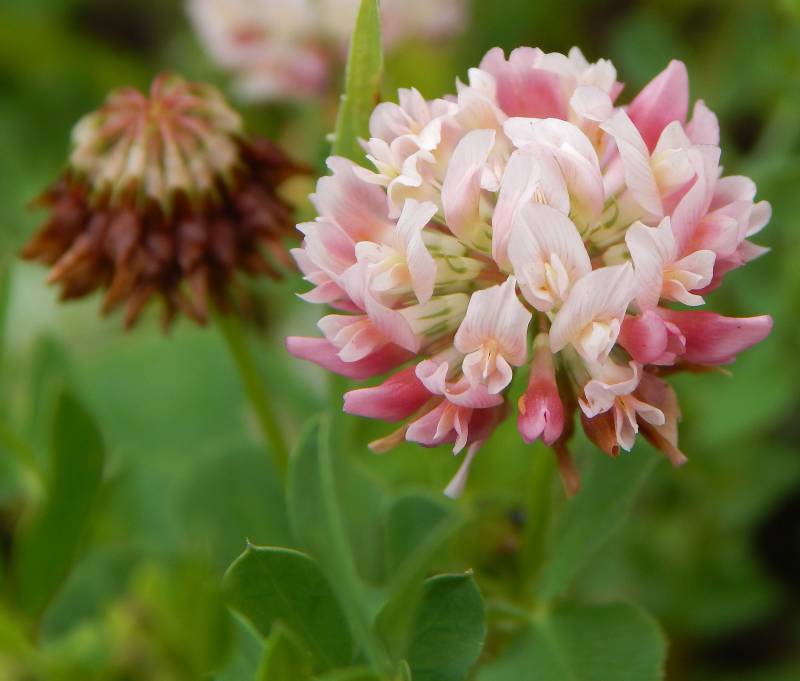Trifolium campestre
Trifolium hybridum
field clover, hop clover
alsike clover
Leaves trifoliate, the petioles considerable longer than the stipules;
leaflets oblong-elliptic to oblanceolate, 1-3 cm. long, serrulate 2/3 their length;
petiole of the terminal leaflet at least twice as long as those of the lateral leaflets;
stipules ovate, 4-9 mm. long, attached to the petiole over half their length, the free tip about the same length as the width of the attached portion.
Leaves trifoliate, leaflets ovate to obovate or obcordate, 1-3 cm. long, serrulate;
stipules 5-20 mm. long, tapering.
Inflorescence of 30- to 100-flowered heads, up to 12 mm. thick, on axillary peduncles longer than the leaves;
flowers 4-6 mm. long, yellow, pea-like;
calyx glabrous, half the length of the corolla, the upper 2 teeth about half as long as the lower 3, the latter slightly longer than the calyx tube;
banner flared and spreading, much longer than the wings and keel.
Inflorescence of many-flowered heads, 1.5-2.5 cm. broad and long, on axillary peduncles shorter to several times longer than the leaves;
flowers pea-like, white to reddish, 5-9 mm. long, reflexed, the pedicels 1-5 mm. long;
calyx less than half as long as the corolla, mostly glabrous, the 5 teeth awl-shaped, equal to the tube;
banner nearly erect.
Pod 1- or 2-seeded, much longer than the attached style.
Pod 1-3 seeded.
Trifolium campestre
Trifolium hybridum
- Local floras:
BC,
CA,
OR,
WA
- Local Web sites:
CalFlora,
CalPhotos,
Flora NW,
PNW Herbaria,
Turner Photog.
WildflowerSearch
iNaturalist (observations)
USDA Plants Database
- LBJ Wildflower Center
- SEINet
- Plants of the World Online
- Encyclopedia of Life
- Wikipedia
- Google Image Search
- Local floras:
BC,
CA,
OR,
WA
- Local Web sites:
CalFlora,
CalPhotos,
Flora NW,
PNW Herbaria
WildflowerSearch
iNaturalist (observations)
USDA Plants Database
- LBJ Wildflower Center
- SEINet
- Plants of the World Online
- Encyclopedia of Life
- Wikipedia
- Google Image Search



